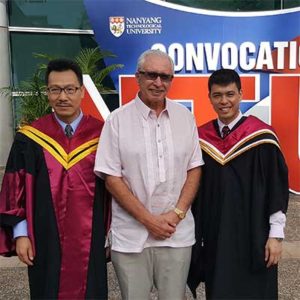Question:
Submitted by Weldehaweria Gebrekrstos, Ethiopia
We teachers are required to use authentic materials to enrich learners’ use of the language. What advice can you give?
Dr. Richards responds:
When textbooks and commercial materials were the primary sources of classroom teaching and learning, a debate that emerged was the use of authentic materials versus created materials. Authentic materials refers to the use in teaching of texts, photographs, video selections, realia, and other teaching resources that were not specially prepared for pedagogical purposes. Created materials refers to textbooks and other specially developed instructional resources that have been prepared to include examples of specific grammatical items discourse features. Dialogs in course books, for example, might be specially written to highlight certain grammatical choices or to illustrate specific conversational strategies. Hence, it was often argued that authentic materials are preferred to created materials because unlike the often rather contrived content of much created material, they contain authentic language and reflect real-world uses of language.
Typical claims for and against the use of “authentic” materials are:
For
- They have a positive effect on learner motivation.
- They provide authentic cultural information about the target culture.
- They provide exposure to real language.
- They relate more closely to learners’ needs.
- They support a more creative approach to teaching.
Against
- Created materials can also be motivating for learners.
- Authentic materials often contain difficult language.
- Created materials may be superior to authentic materials because they are generally built around a graded syllabus.
- Using authentic materials is a burden for teachers.
In many language programs, teachers use a mixture of created and authentic materials because both have their advantages as well as limitations. Furthermore, the distinction between authentic and created materials is increasingly blurred because many published materials incorporate authentic texts and other real-world sources. And today many books take on the aura, if not the actuality, of authenticity, containing considerable amounts of photographically reproduced “realia”, in the form of newspaper articles, maps, diagrams, memo pads, menus, application forms, advertisements, instructional leaflets and all the rest. Some books, indeed, almost entirely consist of authentic material, including illustrations, extracted from newspapers, or magazines.
In addition, this debate has become less relevant in today’s world since the Internet provides ready access to authentic materials of every kind. Classroom teaching and classroom materials hence serve to prepare learners to navigate, explore, and access authentic materials related to their needs and interest through the Web, as we discuss further below. There is no reason, therefore, why textbooks and other classroom materials should not contain a mix of authentic and created texts depending on the intentions of the materials.
When choosing authentic materials care must be taken to ensure they are at an appropriate level for learners, and that that they are used in a way that supports learning rather than causes frustration for learners.
